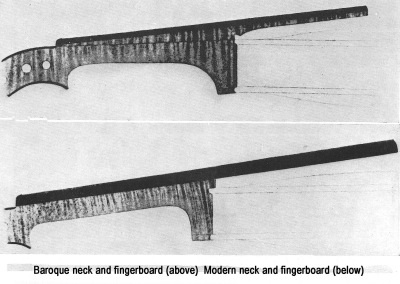As Mark Twain said; I was born humble, but it wore off. My last shred of humility is all that stands between me launching into a rant about why you can't get - and don't want - the action on your bass to be just like your Gibson 335, here, on Alembic's forum.
It would be like marching into a Learjet factory and announcing in a loud, clear voice; you're doing it all wrong! It costs too much! Take off those flat things sticking out of the sides!
Don't worry, I'm not calling anyone a moron, except me. There are forces at work here far beyond our ken. (The Foghorn is Scottish, y'know. She actually says stuff like that, and after centuries of marriage, I do too.) Alembic are the acknowledged masters of uniting the forces of wood and wire to perfection.
There are so many factors at work in matters of string, scale and sound - and Alembic's solutions address each in their own unique way, such as the adjustable nut, or that masterpiece of engineering: the Alembic bridge, and even the slotted tailpiece for those of us who change strings a lot - that I'll just admit my ignorance right up front and get it over with.
Besides, no other musical instrument maker has gone to such great lengths to make sure you can adjust every single factor of your action (nut, neck and bridge), so if the action on your Alembic bass isn't perfect - PERFECT - that just means you ain't tryin'.
Here's a little glimpse through a window into just one of the main factors that musical instrument makers confront (with nifty animated gifs, my favorite part.):
https://plus.maths.org/content/why-violin-so-hard-play I don't know how they could have explained that without the animated gifs, y'know?
As for fiddles, hold up your left hand and spread your fingers as wide as you can (mmbaby). On a violin, that's an octave, pretty much. No frets. It's like playing whack-a-mole with fleas. And bowing (arco) is a whole different beast, that instantly maximizes a string's oscillation and unleashes harmonics you can't imagine. Not all of them good. Taming those suckers is an art in itself.
I'm too lazy to find the link (it's somewhere in this thread, I think) to the National Musical Instrument museum in Vermillion, South Dakota, but I noticed that in their notes on a Stradivarius or Amati violin that it was the ONE violin by that maker that had the original, unaltered neck. (It was virtually untouched.) That kinda floored me. For hundreds of years, guys with varying degrees of skill and knowledge thought nothing of ripping the neck off a violin and doing this to it:

... and you're asking me why your pal takes sandpaper to his fiddle? No repairman in his right mind would tell him not to, either. Go ahead, knock yourself out. Wanna borrow my belt sander? Here's a hammer.